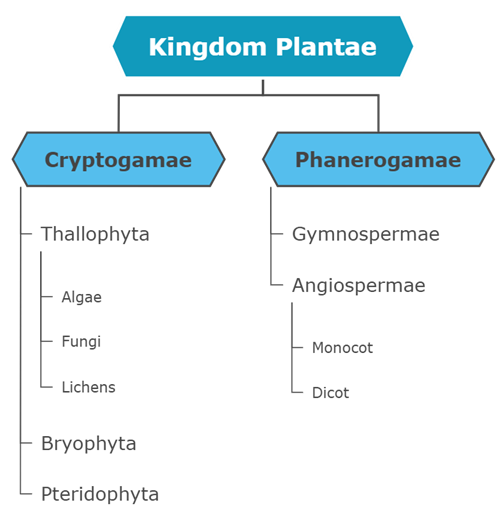
PUMPA - SMART LEARNING
எங்கள் ஆசிரியர்களுடன் 1-ஆன்-1 ஆலோசனை நேரத்தைப் பெறுங்கள். டாப்பர் ஆவதற்கு நாங்கள் பயிற்சி அளிப்போம்
Book Free DemoPlantae:
It is a kingdom that comprises multicellular eukaryotic organisms. These organisms are autotrophs as they use chlorophyll for photosynthesis.
- There are very few species, which are both autotrophs and heterotrophs. Hence all the plants are included in this kingdom.
- These organisms reserve their food materials like starch and lipids in the form of oil or fat.
- As the plants of the kingdom Planate are classified based on the differentiation of their body parts, the first level of classification depends on whether the plant body has well-differentiated, distinct parts.
- The next level classification of plants depends on the presence of special tissues in these differentiated tissues to transport water and other substances. The ability to bear seeds and the enclosure of seeds within fruits are the criteria for further classification.
Kingdom Plantae can be broadly classified into four evolutionarily related groups:
- Mosses
- Ferns
- Cone-bearing seed plants
- Flowering seed plants

Based on dichotomy, the plants are classified into two main groups: flowering and non-flowering plants.
The plants that do not produce seeds are known as non-flowering plants (Cryptogams), and the plants that have seeds are known as flowering plants (Phanerogams).
Based on the nature of the plant body, the non-flowering plants are classified into three types such as algae, mosses and ferns.
The flowering plants are classified into two types as gymnosperms and angiosperms, based on their fruit bodies.